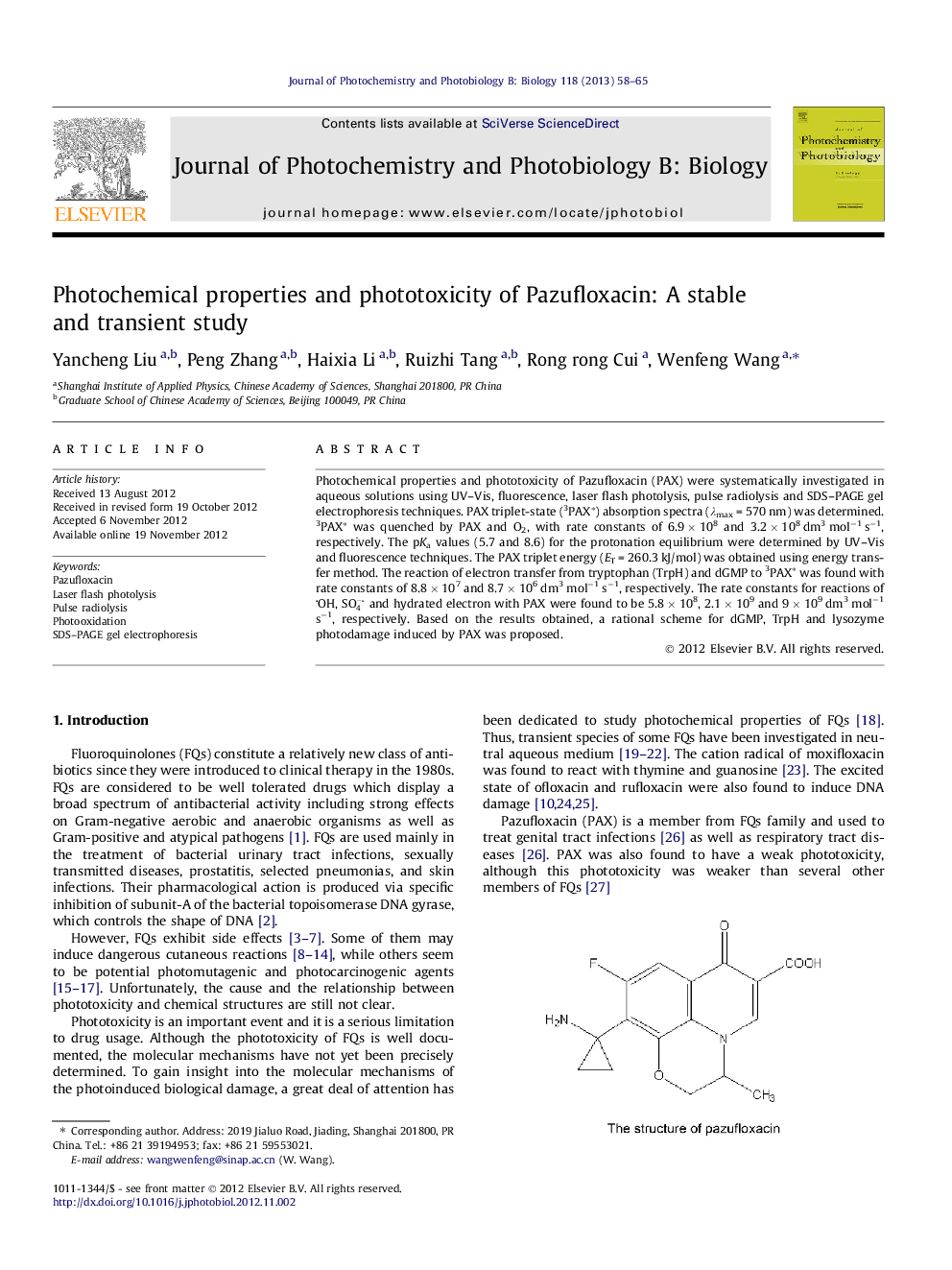| Article ID | Journal | Published Year | Pages | File Type |
|---|---|---|---|---|
| 30720 | Journal of Photochemistry and Photobiology B: Biology | 2013 | 8 Pages |
Photochemical properties and phototoxicity of Pazufloxacin (PAX) were systematically investigated in aqueous solutions using UV–Vis, fluorescence, laser flash photolysis, pulse radiolysis and SDS–PAGE gel electrophoresis techniques. PAX triplet-state (3PAX∗) absorption spectra (λmax = 570 nm) was determined. 3PAX∗ was quenched by PAX and O2, with rate constants of 6.9 × 108 and 3.2 × 108 dm3 mol−1 s−1, respectively. The pKa values (5.7 and 8.6) for the protonation equilibrium were determined by UV–Vis and fluorescence techniques. The PAX triplet energy (ET = 260.3 kJ/mol) was obtained using energy transfer method. The reaction of electron transfer from tryptophan (TrpH) and dGMP to 3PAX∗ was found with rate constants of 8.8 × 107 and 8.7 × 106 dm3 mol−1 s−1, respectively. The rate constants for reactions of OH, SO4- and hydrated electron with PAX were found to be 5.8 × 108, 2.1 × 109 and 9 × 109 dm3 mol−1 s−1, respectively. Based on the results obtained, a rational scheme for dGMP, TrpH and lysozyme photodamage induced by PAX was proposed.
Graphical abstractFigure optionsDownload full-size imageDownload as PowerPoint slideHighlights► We investigated the photochemical properties of PAX by UV–Vis, fluorescence and laser flash photolysis. ► We investigated the reactions of 3PAX∗ with TrpH and dGMP by the method of laser flash photolysis. ► We investigated the properties of PAX radical cation (PAX+) and radical anion (PAX−) by the method of pulse radiolysis. ► The reaction of excited state of pax with lysozyme was studied by the method of gel electrophoresis.
